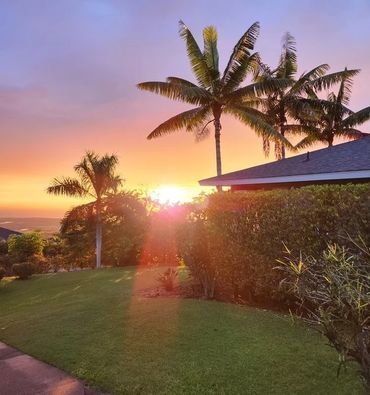
Hawaii Inpatient and Outpatient Rehab Centers Near Me for Drug and Alcohol Addiction
Many people don’t know where to start when it comes to choosing a rehab program in Hawaii. There are countless options and luckily, online listings of treatment programs feature details that can help you make a decision, including staff bios, patient reviews and testimonials, virtual facility tours, what insurances they accept, treatment costs and lists of amenities offered. You may be able to locate both inpatient and outpatient rehab programs. (Learn more about inpatient vs. outpatient rehab facilities).
Not all programs will be the perfect match for your situation, so it’s important that you take the time to research your options. For example, if you have a co-occurring disorder or abuse multiple drugs, you will want to find a rehab facility that specializes in dual diagnosis treatment or polysubstance abuse. You may be looking for treatment that is specific to your individual needs, such as drug rehab programs for couples or treatment for LGBTQ people.
Addiction treatment centers in Hawaii
Open to Travel? Check out Top-Rated Options
All Addiction treatment centers in Hawaii
Are You Covered For Treatment?
- Honolulu Rehabs
- Hilo Rehabs
- Kailua Kona Rehabs
- Kaneohe Rehabs
- Waianae Rehabs
- Waipahu Rehabs
- Lihue Rehabs
- Ewa Beach Rehabs
- Kapaa Rehabs
- Kapolei Rehabs
Rehab Insurance Coverage in Hawaii
Rehab Centers in Hawaii
Information About Rehab in Hawaii
Latest Reviews
Latest Reviews of Rehabs in Hawaii
Big Island Substance Abuse Council - Hilo
Friendly surroundings and positive attitudes. They had great class sessions. The only downfall I found was the location of the facility.
Aloha House, Inc.
It has been years ago. It seemed like a good program at the time. The staff was a strength. Lacks counseling.
Habilitat
Helping residents at Habilitat prepare for their high school equivalency diploma has given me some gratifying insights I didn’t expect. Undoubtedly this is a clear indication of how genuine and well-conceived the organizations’ structure and operating plan is. The three qualities I saw immediately in the residents are: 1.) They were completely accepting of one another with no signs of labelling or judgement. There are no cliques or classes, just brothers and sisters. 2.) The residents simply refuse to quit on this chosen path to their recuperation. Regardless of their previous backgrounds or their current stage in recovery, their commitment to regaining their lives is clearly evident. 3.) They also understand that accountability is central to their success. There is no talk of the past or distribution of blame; they simply choose to press on. These are qualities that will contribute to society. These are also changes that must be developed by living them over an extended period of time. The basis of this recovery process is not built on medical research or psychiatric theory but on the life experience of the founder. And from what I see in the classroom, the most certain truth is experience. It is my privilege to work with these incredible students, within this well envisioned, sincere organization.
Drug Addiction in Hawaii
Hawaii has high rates of meth use and treatment, and cocaine and inhalant use among students is above the average rate for students nationwide. Drug overdoses from prescription drugs are also an issue in the state.
- Meth use and treatment in Hawaii are much higher than the national average.9
- 61 of Hawaii’s 120 drug-related deaths in 2013 were due to methamphetamine.9
- Hawaii’s rate for positive workplace drug tests for meth is 410% higher than the national average.9
- The average annual number of drug overdoses in Hawaii nearly doubled from 1999-2003 (78 deaths) to 2010-2014 (156 deaths). Prescription opioids contributed to 35% of drug overdose deaths from 2010 to 2014.11
- Cocaine use rates among Hawaii high school students were slightly higher than the national average in 2015.5
- Inhalant use among Hawaii high school students was slightly higher than the national average in 2015.5
Addiction by the Numbers
- In 2012, Hawaii ranked number one in the nation for the percentage of drug-related treatment admissions for meth.9
- In 2015, 62.3% of people in treatment in Hawaii struggled with both drugs and alcohol, 23.5% with only drugs, and 14.2% with only alcohol.1
- The number of people enrolled in substance abuse treatment in Hawaii increased from 4,464 people in 2011 to 5,768 in 2015.1
- Only 6,371 people age 12 and older were admitted to substance abuse treatment in Hawaii in 2015, despite the state having nearly 62,000 people who struggled with an alcohol use disorder in the same year.2, 3
How Much Does Rehab Cost?
The cost of going to rehab in Hawaii will vary depending on the type of program and facility you choose. Things like the length of your stay or type of program, the types of amenities the center offers, and your own personal requests (e.g., chef-prepared meals or private rooms) can influence the overall cost.
There are a number of treatment facilities in HI that offer sliding scale fees, which calculate the cost of treatment based on what you are able to pay. In addition, there are programs that accept public insurance, like Medicaid and Medicare, as well as private health insurance.
Treatment Options
Hawaii has around 150 licensed and certified substance abuse treatment centers, encompassing many different approaches to fit every individual’s needs.4 A high number of programs offer evidence-based therapies such as cognitive behavioral therapy, motivational interviewing, and contingency management. Programs also offer relapse prevention, HIV/AIDS education, peer support, and social skills development.10
Local Resources for Recovering Addicts
- Coalition for a Drug-Free Hawaii – Connect with local groups who work with young adults and their families to help reduce substance abuse in Hawaii.
- Hawaii Medicaid – Apply for medical insurance coverage with the state of Hawaii.
- Hawaii’s Alcohol and Drug Abuse Division – Find local substance abuse treatment, apply for public funds for treatment, get training to help in substance abuse treatment, or apply for certification of your treatment center.
- Oahu Intergroup of Hawaii – Find Alcoholics Anonymous meetings in Honolulu.
- Narcotics Anonymous meetings – Browse a list of Narcotics Anonymous (NA) meetings in Hawaii.
Insurance Providers
Learn more about some addiction treatment insurance providers:
Sources
- Substance Abuse and Mental Health Services Administration. (2014). Behavioral Health Barometer: Hawaii, Volume 4.
- Substance Abuse and Mental Health Services Administration, Center for Behavioral Health Statistics and Quality. (2017). Treatment Episode Data Set (TEDS): 2005-2015. State Admissions to Substance Abuse Treatment Services.
- Substance Abuse and Mental Health Services Administration, Center for Behavioral Health Statistics and Quality. National Survey on Drug Use and Health, 2014 and 2015. Hawaii.
- Substance Abuse and Mental Health Services Administration. (2017). Behavioral Health Services Information System Series: National Directory of Drug and Alcohol Abuse Treatment Facilities 2017.
- S. Department of Health and Human Services. (2015). Hawaii Adolescent Substance Abuse Facts.
- Honolulu Civil Beat. (2016). Hawaii’s Ice Age Never Really Went Away.
- State of Hawaii, Department of Health. (2017). Alcohol and Drug Abuse Division.
- Coalition for a Drug-Free Hawaii. (2017).
- Hawaii Meth Project. Methamphetamine Impact: Hawaii Statistics.
- Substance Abuse and Mental Health Services Administration (SAMHSA). (2015). National Survey of Substance Abuse Treatment Services (N-SSATS): 2015 State Profile – Hawaii.
- Hawaii State Department of Health. (2015). Drug Overdose Deaths among Hawaii residents, 1999-2014.





















